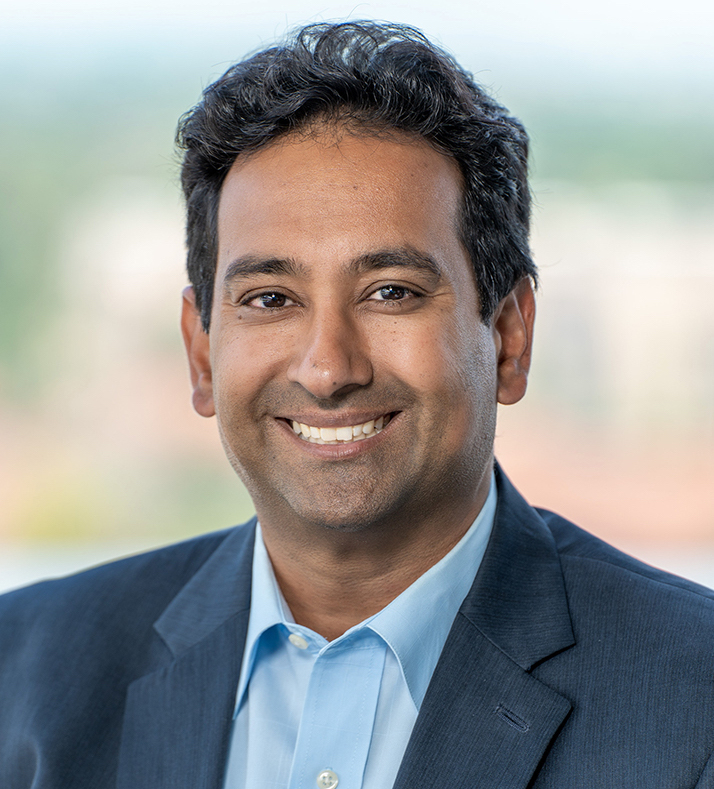Joint Warfighter Medical
Revolutionizing Oxygen Therapy for Trauma Patients, the SAVE-O2 Trial is a Leap Forward in Healthcare



Posted January 5, 2024
Adit Ginde, M.D., M.P.H., University of Colorado School of Medicine
 Dr. Adit Ginde
Dr. Adit Ginde (Photo Provided)
In the late 18th century, oxygen was considered a luxury commodity. People were willing to pay ten dollars, the equivalent to $400 today, for just five minutes of oxygen therapy at "oxygen bars" in major cities, like New York and Berlin. The first recorded therapeutic use of oxygen was in 1783 when a woman suffering from tuberculosis experienced remarkable relief through daily inhalation. This marked a significant milestone in the history of oxygen therapy and paved the way for its use in treating respiratory conditions. In 1890, the first documented continuous administration proved its efficacy in treating pneumonia at six liters per minute, while contemporary publications described experimental administration routes such as the stomach for resuscitation, bladder for inflammation, and even enemas for gallstone treatment, showcasing the creative approaches of that era.1
In 1917, a significant turning point occurred when Dr. John Haldane published his work that introduced a rational framework for the use of oxygen. The paper examined how carbon dioxide regulates the respiratory drive and introduced the concept later defined as
It was not until 1962 that medical experts understood that intermittent oxygen therapy could cause the concentration of oxygen in the arterial blood to be abnormally low after treatment.3 Despite this knowledge, over 10% of physicians involved in intensive therapy continued to prescribe this treatment through 1972.4
Fifty years later, the American Association for Respiratory Care Clinical Practice Guideline for the Management of Adult Patients with Oxygen in the Acute Care Setting recommends an oxygen saturation range of 94% to 98% for most hospitalized patients.5
Innovative strides in oxygen delivery emerged from Dr. Adit Ginde and colleagues' work, initially supported by the United States Special Operations Command. Their systematic review of 43 studies and observational study,6,7 in conjunction with expert agreement through a collaborative process called the Delphi technique that allows field experts to work together to reach a consensus, outlined considerations for determining the target values of oxygen in the blood. This process determined optimal oxygen saturation to be 90% to 96% and updated other vital blood oxygen parameters as well,8 though this definition required validation in a large clinical trial.
This groundbreaking research paved the way for the "Strategy to Avoid Excessive Oxygen,” or SAVE-O2, multicenter randomized clinical trial that was subsequently funded by the Joint Warfighter Medical Research Program. The SAVE-O2 trial aimed to redefine oxygen requirements in critically ill trauma patients by targeting normoxia, or "normal” oxygen levels. This study involved the collaboration of eight major U.S. trauma centers including a military medical center, and the primary intervention was the implementation of the targeted normoxia oxygen therapy protocol to effectively manage oxygen administration in trauma patients.
The trial team is analyzing the data from approximately 13,000 randomized patients. Preliminary results show promising outcomes. The team demonstrated that targeting normoxia in trauma patients can reduce hyperoxia, or too much oxygen, without increasing hypoxia, or too little oxygen. Both effects are closely tied to supplemental oxygen therapy and can affect the patient's mortality. The intervention successfully lowered the number of days that patients required supplemental oxygen and was associated with lower mortality rates and shortened hospital stays. These results suggest a potential transformation in oxygen therapy practices.9
Dr. Ginde presented study results at the Military Health System Research Symposium in August 2023, and the team was awarded the distinguished recognition of Outstanding Research Accomplishment in the plenary session. Advancements in oxygen therapy protocols developed by Dr. Ginde's team are already being implemented within the Joint Trauma System's Clinical Practice Guidelines. This research will be informing changes to 19 relevant Military Health System guidelines, including Airway Management of Traumatic Injuries, updated in September 2023.
As oxygen therapy continues to evolve, the outcomes of the SAVE-O2 trial serve as a testament to scientific progress and have an impact on the way that healthcare is practiced. Looking towards the future, refining and implementing current practices with these updated oxygen therapy guidelines could have a tremendous impact on optimizing resource planning and supplemental oxygen use in both the military and civilian healthcare settings, with the potential to improve the critical care of our service members and the general public.
References:
1 Grainge C. 2004. Breath of life: the evolution of oxygen therapy. Journal of the Royal Society of Medicine 97(10):489-93.
2 Haldane JS. The Therapeutic Administration of Oxygen. 1917. British Medical Journal 1(2928):181-3.
3 Massaro DJ, Katz S, Luchsinger PC. 1962. Effect of various modes of oxygen administration on the arterial gas values in patients with respiratory acidosis. British Medical Journal 2(5305):627-9.
4 Leigh JM. 1974. Early treatment with oxygen. The Pneumatic Institute and the panaceal literature of the nineteenth century. Anaesthesia 29(2):194-208.
5 Piraino T, Madden M, Roberts KJ, et al. 2022. AARC Clinical Practice Guideline: Management of Adult Patients With Oxygen in the Acute Care Setting. Respiratory Care 67(1):115-128.
6 Douin DJ, Schauer SG, Anderson EL, et al. 2019. Systematic review of oxygenation and clinical outcomes to inform oxygen targets in critically ill trauma patients. J of Trauma Acute Care Surg 87(4):961-977.
7 Douin DJ, Anderson EL, Dylla L, et al. 2021. Association Between Hyperoxia, Supplemental Oxygen, and Mortality in Critically Injured Patients. Crit Care Explor 3(5):e0418.
8 Dylla L, Anderson EL, Douin DJ, et al. 2021. A quasiexperimental study of targeted normoxia in critically ill trauma patients. J Trauma Acute Care Surg 91(2S Suppl 2):S169-S175.
9 Ginde, AA. 2023. Strategy to Avoid Excessive Oxygen (SAVE-O2) in Critically Ill Trauma Patients: A Multicenter Cluster-Randomized, Stepped Wedge Trial for Targeted Normoxia. The 2023 Military Health System Research Symposium, Kissimmee, Florida. MHSRS-23-10446.
Last updated Friday, March 7, 2025














